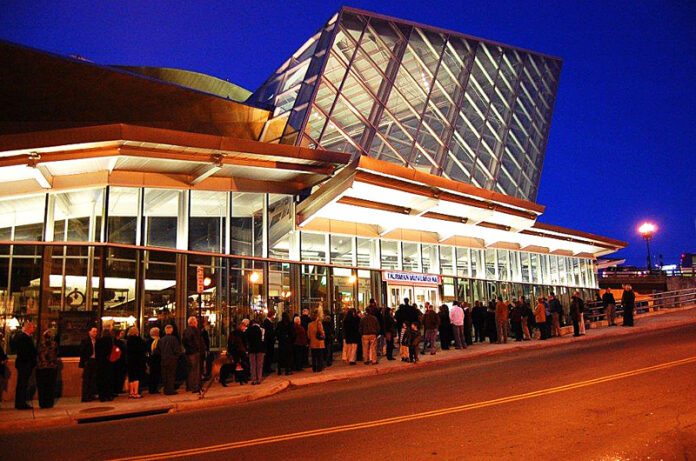The value of arts and culture in society is not a parameter easily put into numbers. One can describe the emotional effect that a painting or dance performance can have on them but often the economic contribution of arts organizations and artists is an area left underexplored.
A first-time economic impact study conducted jointly by the Arts Council of the Blue Ridge and the Roanoke Valley -Alleghany Regional Commission (RVARC) during the late summer and fall of 2009 aimed to remedy this lack of data. The results of this report were unveiled during a press conference at the Jefferson Center on Tuesday.
Taking 2008 financial data gathered from 17 cultural organizations (including the Eleanor D Wilson Museum at Hollins University and the Taubman Museum of Art) and 37 individual artists, the study asserted that the arts and culture indistry of the region bring over $11.5 million annually in new sales revenue into the region as a result of art sales, visitation / tourism and other funds from external sources.
Arts Council of the Blue Ridge President Phil Sparks said that one of the most encouraging aspects of the study is that “in the economy that we’re now in, over $11 million can be generated. We’re not just talking bricks and mortar. This shows that the arts community itself is alive and well in the greater Blue Ridge Region.”
Arts Council executive director Laura Rawlings worked to have the survey form set up on line, then “begged and pleaded with everybody [to take it]. It’s been a year long process.” Executives from local arts organizations, including Jefferson Center, the Taubman Museum, Opera Roanoke and the Roanoke Symphony Orchestra served on a steering committee, offering some guidance to Rawlings and the Arts Council.
In the end, arts and culture non-profits in the region translate roughly to $6.3 million in new wealth brought into the region each year, according to the report. The study asserts that an estimated $761,000 in tax revenue is being contributed to state and local government coffers annually.
The impact of the arts on employment was also considered by the survey. In addition to the 141 jobs directly generated by the arts organizations in the study, there are also 33 positions created in industries that supply arts organizations.
Roanoke City Councilman Dave Trinkle, who joked about his performing in the past with the Southwest Virginia Ballet at the press conference, said the study was an important tool in developing the arts and culture industry in the region. He argued that the benefits of the arts and culture industry of the region reach beyond quantifiable amounts in their role in developing “vibrant public spaces.”
Trinkle requested the study after joining with former councilman Rupert Cutler in 2009 to “ask what we could do in these tough times to value our arts and culture industry.” Now that the results are in and indicate the arts is a viable economic booster, Trinkle said that he “can go back to the council and bring the report with us,” when pushing for funding and incentives for artists and arts organizations.
Trinkle singled out results from the artist survey within the study, as a symbol of the vitality of that community – pointing to the $270,000 in annual art sales reported by individual artists: “Competition is fierce in this creative class,” he noted.
Sparks indicated that in addition to generating sales and tax revevues, the arts and culture industry locally could act as a magnet for drawing young professionals to the Roanoke area: “The arts are a huge force in attracting the creative generation – and retaining those that we have here.”
RVARC Regional Economic Development Manager John Hull echoed this sentiment. “One of the impacts that can’t be quantified is the art and culture industry’s role in attracting individuals and small businesses,” he said. “ It’s all part of a quality-of-life amenities package.”
Laura Rawlings said, “people don’t really know we are an industry. We create jobs, we bring in tourists. That’s why this is really important.”
By Aaron Layman [email protected]

